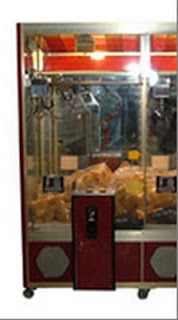Its been a while hasn’t
it?! I’ve been learning Bengali and knitting, watching Tolstoy performed live
above pubs and meeting many friends for festive meals. I thought given the
season I might share a little festive anthropology with you on Christmas
Traditions.
The nights are closing in and its so cold you’re losing touch
with your toes! It must be nearly time for a winter celebration; for a Merry
Christmas! Ever since I first travelled to Europe as a teenager I have been
fascinated by our shared European heritage and the way it is expressed in
such different ways. Never was this truer than with our divergent celebrations
of Christmas. So I decided to explore three different expressions of Christmas;
from English, German and Spanish perspectives.
Disclaimer: Every family is different and doesn’t necessarily
do the things listed below. In no way is this supposed to be an exhaustive
description.
England
Christmas is quite a contracted celebration in England.
Although children mark advent with Advent Calendars most of the focus in on 24th-26th
December. The Christmas Trees are put up in family homes from the start of
December. On Christmas Eve traditional families might go to Midnight Mass but
most families start preparations for Christmas Day. Christmas Eve (24th
December) is the time when Father Christmas visits overnight leaving presents
for good children in stockings (large socks). He and his reindeer are often
made welcome through the provision of food items laid out for them such as
mince pies and a carrot for the reindeer. Both Christmas Day and the day that
follows (Boxing Day) are national holidays in England. The 25th
December is the central event and the day on which presents are given and
received. Christmas Day is also the day when the large Christmas meal is eaten,
typically including; Turkey with stuffing and cranberry sauce, ‘pigs in
blankets’ (chipolatas wrapped in bacon) and Brussels Sprouts. These are followed by mince pies, a
Christmas pudding (a fruit dessert) which is often set alight with warm brandy as
part of the ceremony, and sometimes Christmas cake. Modern English Christmas
Days are also accompanied by lots of seasonal television such as The Snowman.
Germany
The way other countries celebrate has always interested me
and having a few friends with connections across Germany I asked them what made
Christmas. One of the most popular activities was going to the Christmas Fair
and drinking warm spiced drinks with friends. This activity has not been missed
by the opportunistic tourism boards in England who advertise flights to German markets; where
you can apparently buy authentic wooden toys and eat mountains of wurst, Stollen
and gingerbread. The Christmas Tree is
an important tradition introduced by the Germans to European Christmas
accompanied by its companion, mulled wine. Christmas extends out as far as St Nicholas Day, a
day unrecognised in England. In some areas, the gifts from St Nicholas arrive
on St Nicholas Eve. If presents have not been given on St Nicholas Eve, then it
is on Christmas Eve, the focus of the Christmas time, when gifts are shared.
Christmas also stretches out to Epiphany in January; when people, particularly
children, join parades and other activities around the town dressed as the Three
Kings. German Christmases seem much longer than English ones.
Spain
Spanish Christmases begin with the celebration of their
patron saint, Mary on December 8th, the day of the immaculate birth.
As a thoroughly Catholic country the celebration of Christmas follows the church
calendar quite tightly. On Christmas Eve (Nochebuena) the main Christmas meal
is eaten often featuring lamb or seafood; quite separate from the American
influenced Turkey. On the subject of Christmas food, Spain is famous for its
turron or nougat. Most homes will feature a beléne or nativity scene and in
some areas the scene also features the El Caganer, or defecating shepherd. The
origins of this unusual onlooker to the nativity are cloaked in the mists of
time. The Spanish never miss out on a chance to dance and so unsurprisingly
have a Christmas dance, called the Jota. The modern world has had its impact on
the Spanish too with the El Gordo Christmas Lottery. The 28th
December is also a celebratory day on Santos Inocentes which acts a bit like
‘April Fools’; often a child is made mayor for the day and his/her wishes are
honoured as if they were the real mayor. This is just as well as children have
to wait until the feast of Epiphany for their gifts in Spain. The night before
there are processions of children dressed as the kings. The reindeer and St Nic
are replaced by tired camels and kings who are the present givers. The camels
are placated with straw left in shoes; a little reminiscent of the German
tradition of food left in shoes. The 6th of January is also a
national holiday celebrated with hams and seafood.
The contrasting traditions of the three nations are neatly
summed up in one little tradition; the Christmas Cracker. In Spain they appear
not to exist. The first Christmas Crackers probably contained sweets and
the ‘cracking’ feature was decidedly secondary. In England they are
contextualised by their season, ‘Christmas’ and have lost all reference to
sweets. An archetypal cracker would include; a Christmas hat, a tacky toy and a
cheesy joke – the joke is meant to be bad, that’s the point! German Christmas
Crackers are called ‘Knallbonbon’ a name which reflects both the ‘cracker’ and
sweet components of the tradition. Although I have to admit I’ve never seen a German
Christmas Cracker!
So, that’s my little walk around Christmas traditions in
Europe; there are some interesting similarities and peculiarities I think
you’ll agree! What do you do in your home that’s unique to your family, or
country? Do you know where those traditions come from? Why not ask a family
member or a friend about their traditions?
Have a very Merry Christmas and see
you in 2012!



























